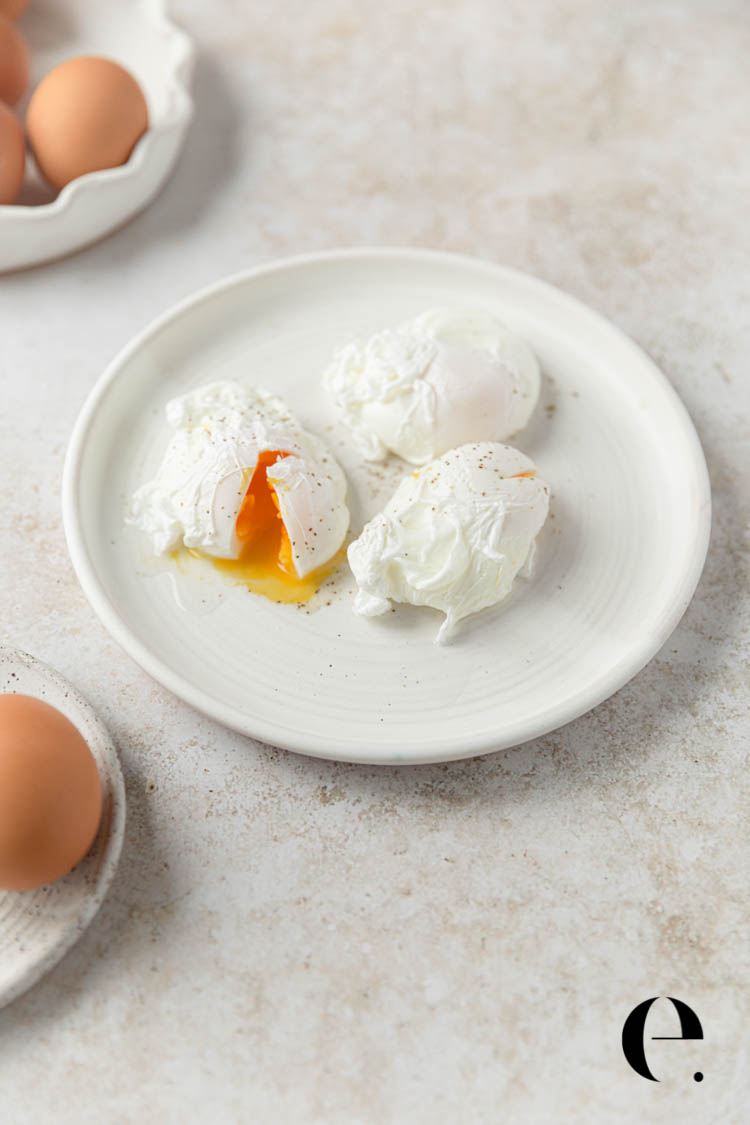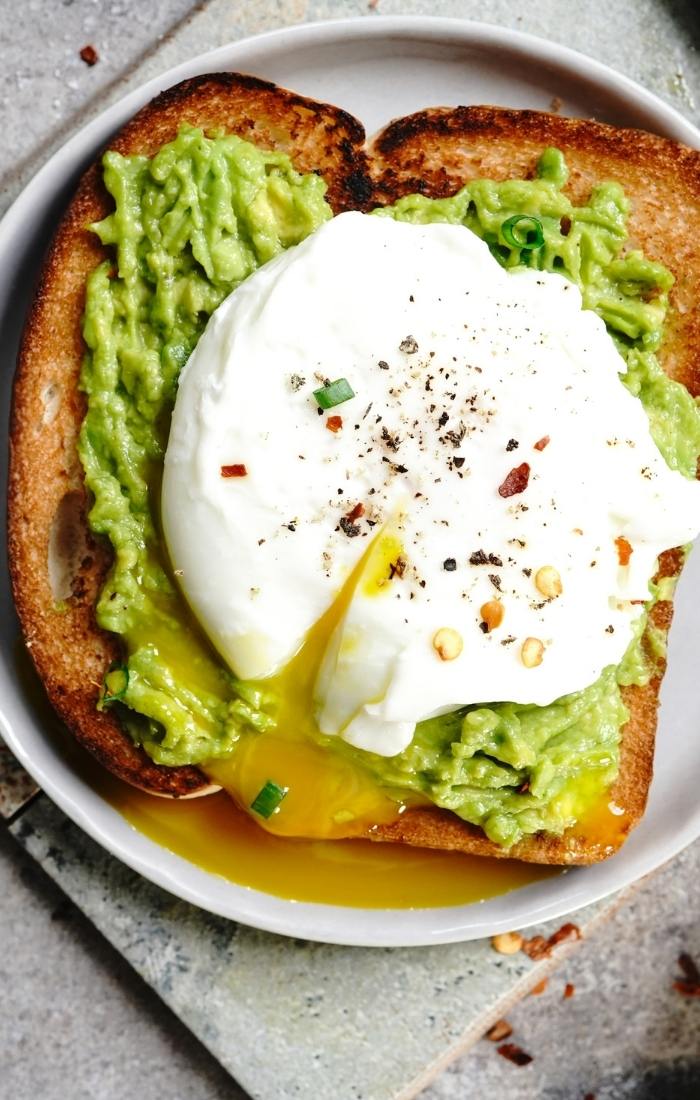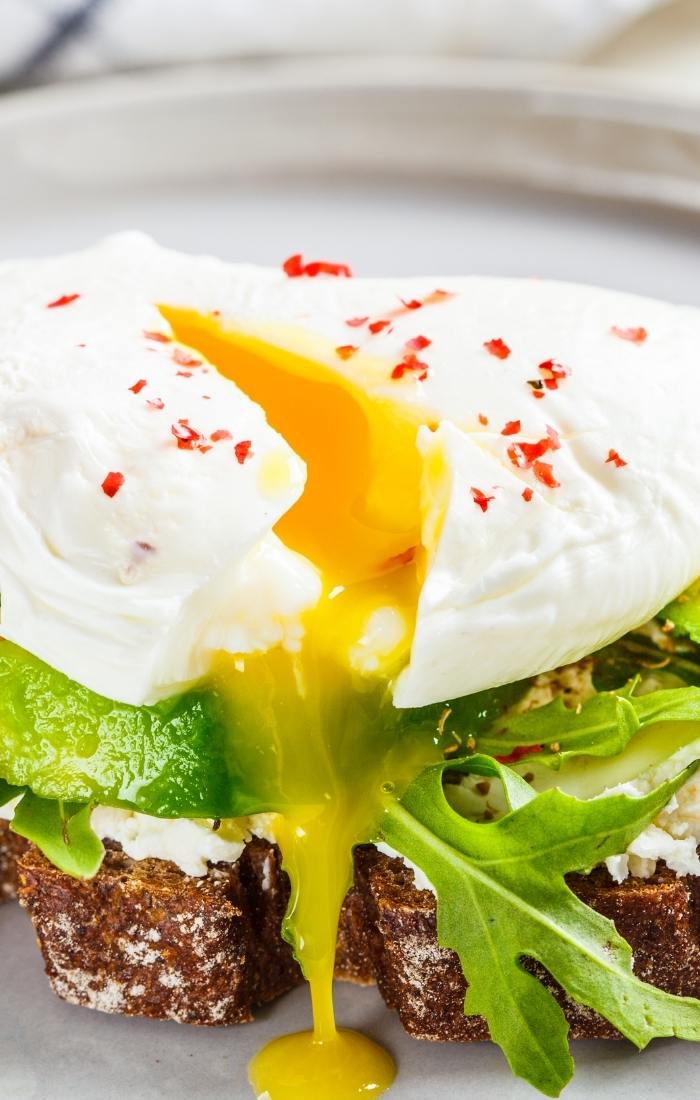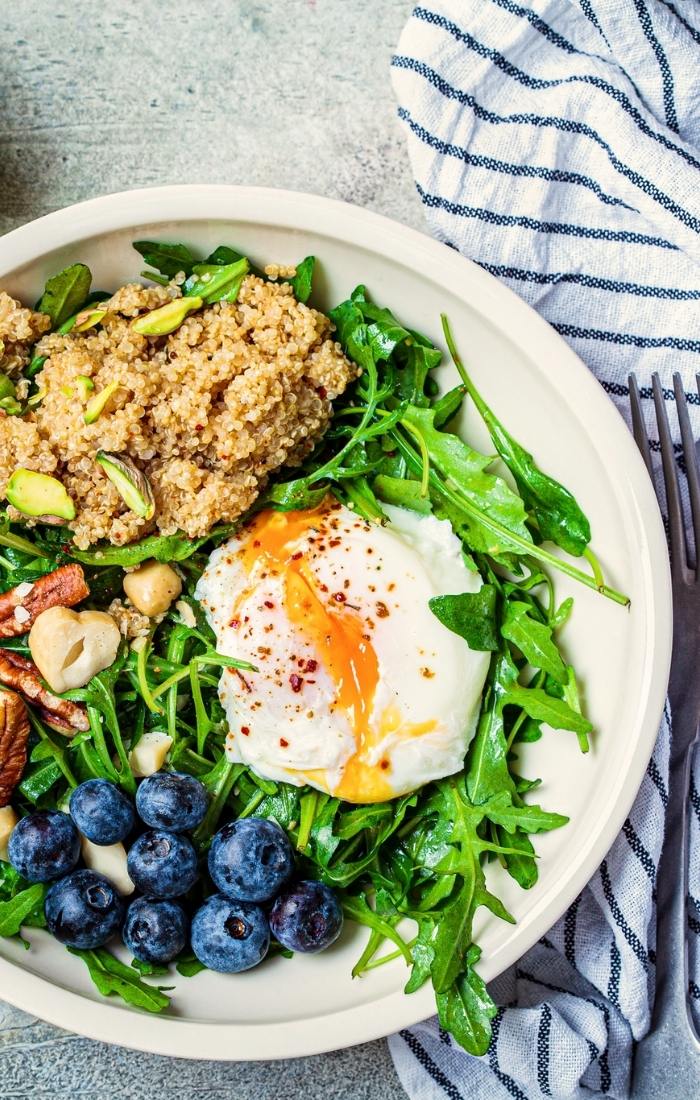
Of the 13 ways to cook eggs, learning how to poach an egg is by far one of my favorites.
Poaching an egg is one of those simple but classic cooking techniques that can elevate any meal, from avocado toast to asparagus to your favorite soup.
However, getting the perfect poached egg can be a bit tricky. Fear not, though, because I’ve tried all the tips and tricks and have put together this step-by-step guide on how to perfectly poach an egg.
You may have heard to put vinegar in the water when you poach an egg. I do this and agree it yields a better result! Distilled white vinegar is cheap and works great. You could also use white wine vinegar or red wine vinegar, too.
Adding vinegar to the water when poaching eggs helps the egg white coagulate faster, resulting in a more compact and neat shape. This is particularly helpful when making this recipe in large quantities or if you want to achieve a more aesthetically pleasing appearance for your poached eggs.
Additionally, the acidity in vinegar can also help to prevent the egg whites from spreading out too much in the water, making them easier to control while cooking.
However, some people may choose not to use vinegar because they do not like the taste or smell it imparts to the eggs. In this case, you can still achieve a good result by using fresh eggs, creating a gentle whirlpool in the water, and making sure the water is at the right temperature before adding the egg.

Ultimately, whether to use vinegar or not is a matter of personal preference and the desired outcome for your eggs.
How to Poach an Egg
Step 1: Choose Fresh Eggs
The first step in poaching the perfect egg is to use fresh eggs. Fresh eggs will have a thicker, more cohesive white, which will help keep the egg together as it cooks. Older eggs are actually better for making easy-peel hard-boiled eggs because they have thinner whites that will spread out more in the water, making them harder to control.
Step 2: Prepare the Water
Fill a large pot or deep skillet with water, and bring it to a gentle simmer over medium-low heat. The water should be gently simmering with a few bubbles, not at a rolling boil. Add a splash of vinegar to the water (about 1 tablespoon per quart of water according to seriouseats.com). The vinegar will help the egg whites coagulate faster, so they don’t spread out too much.
Step 3: Crack the Egg into a Bowl
Crack the egg into a small bowl or ramekin. This will make it easier to slide the egg into the water without breaking the yolk.
Step 4: Create a Whirlpool
Use a spoon to create a gentle whirlpool in the water by quickly turning the spoon in the water 5-8 times; a small whirlpool should form in the middle of the pan. The whirlpool will help the egg whites wrap around the yolk, forming a more compact shape.
Step 5: Add the Egg to the Water
Carefully slide the egg into the center of the whirlpool. The swirling water will help the egg white wrap around the yolk, forming a more compact shape.
Note: If you’re poaching multiple eggs, add them one at a time, allowing each egg to cook for about 30 seconds before adding the next one. Poaching more than one egg at a time in the same pan is a bit advanced, so stick to one at a time until you get the hang of it.
Step 6: Cook the Egg
Cook the egg for about 3-4 minutes, or until the whites are set and the yolk is still runny. Use a slotted spoon to remove the egg from the water and place it on a paper towel to remove any excess water.
Step 7: Serve
Serve the poached egg immediately, garnished with salt, pepper, and any other desired toppings, such as chopped herbs or grated cheese.

Storing Poached Eggs
While poached eggs are best enjoyed immediately after cooking, you can store them in the refrigerator for a short period of time if absolutely necessary. Here’s how:
- After poaching the eggs, remove them from the water with a slotted spoon and place them on a paper towel to absorb any excess water.
- Once the eggs are cooled to room temperature, transfer them to an airtight container.
- Cover the container and refrigerate the poached eggs for up to two days.
When you’re ready to eat, you can reheat them by placing them in a bowl of warm water for a few minutes until they reach your desired temperature. It’s important not to overheat them as this can cause the yolks to become firm and dry.
Note that storing and reheating poached eggs can affect their texture and flavor, so they may not be as good as freshly cooked ones. If possible, it’s always best to enjoy poached eggs immediately after cooking for the best taste and texture.
Ways to Serve Poached Eggs
Poached eggs are a versatile ingredient that can be served in many ways. Here are some of the most popular ways to serve poached eggs:
- On toast: One of the simplest and most popular ways to serve poached eggs is on top of toasted bread. You can add some avocado, smoked salmon, or bacon for a more filling meal. Poached eggs are extra nice on avocado toast.
- In eggs benedict: Eggs Benedict is a classic breakfast dish that consists of a poached egg on top of a toasted English muffin with Canadian bacon and hollandaise sauce.
- In a salad: Eggs can add a protein boost to any salad. They pair particularly well with bitter greens like arugula or spinach.

- In a bowl: Eggs can be a great addition to a bowl of rice or quinoa, along with some roasted veggies and avocado.
- In ramen: Poached eggs are a popular topping for ramen, adding a creamy texture and rich flavor to the soup.
- With asparagus: Poached eggs and asparagus are a classic combination. You can serve them on their own or with some hollandaise sauce for a more decadent dish.
- In a sandwich: Poached eggs can be a great addition to any sandwich, adding a creamy texture and rich flavor. Try adding them to a breakfast sandwich with bacon, cheese, and avocado.
There are many creative ways to serve poached eggs, so don’t be afraid to experiment and find your favorite way to enjoy them!
Print
Perfect Poached Egg
- Author: Elizabeth Rider
-
 Prep Time: 10 minutes
Prep Time: 10 minutes
-
 Cook Time: 3-4 minutes
Cook Time: 3-4 minutes
-
 Total Time: 15 minutes
Total Time: 15 minutes
-
 Yield: Varies
Yield: Varies
-
 Category: Breakfast
Category: Breakfast
-
 Method: Poach
Method: Poach
-
 Cuisine: All
Cuisine: All
Description
Poached eggs are a classic healthy addition to any meal. I like to make this in my 3-quart saucepan, but just about any pan that is at least 3 inches deep will work.
Ingredients
- 1 large egg
- 1 tablespoon distilled white vinegar
- water
Instructions
- Fill a large pot or deep skillet with water and bring it to a gentle simmer over medium-low heat.
- Add a tablespoon of vinegar to the water.
- Crack the egg into a small bowl or ramekin.
- Use a spoon to create a gentle whirlpool in the water.
- Carefully slide the egg into the center of the whirlpool.
- Note: If you are poaching multiple eggs, add them one at a time, allowing each egg to cook for about 30 seconds before adding the next one. Or, if you’re a beginner, only cook one at a time until you get the hang of it.
- Cook the egg for 3-4 minutes or until the whites are set and the yolk is still runny.
- Use a slotted spoon to remove the egg from the water.
- Place the egg on a paper towel to remove any excess water.
- Serve immediately, garnished with salt, pepper, and any other desired toppings.
Keywords: how to poach an egg
The post How to Poach an Egg appeared first on Elizabeth Rider - Elevate Your Wellbeing.

Leave a comment